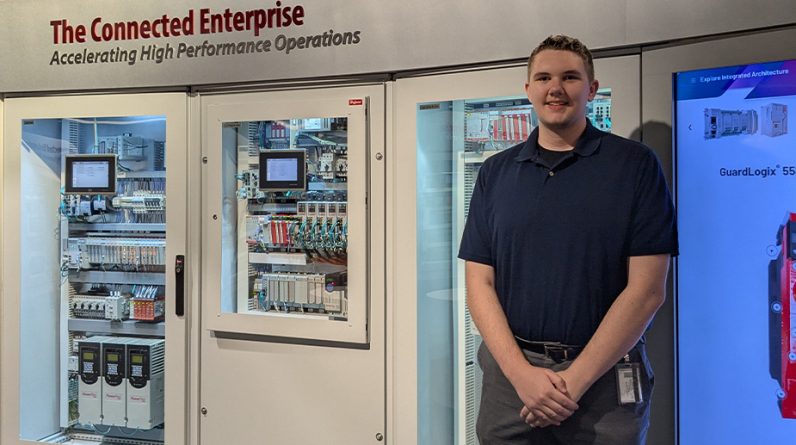If you want a more sober view of the AI landscape, stepping back from the stock-market frenzy caused by the hype and understanding how this technology fits within the greater landscape is probably a good place to start.
The S-curve of adoption is a theory that demonstrates how new technology enters the market over time. It’s a five-phase process that begins with the innovator’s phase, moves to early adopters, then the early majority, and eventually the late majority and the laggards.
An investor can use this model as part of a thinking exercise that helps them determine where a company and its stock may fit within AI’s adoption curve. This allows them to decide whether they’re betting on a short-term, early-growth stock or a long-term narrative.
Stocks within the adoption framework
While there could be a few angles one might use to determine where a company fits within AI’s development, Goldman Sachs created their version of AI’s adoption phases. In a June 17 note, a team led by Chief US Equity Strategist David Kostin laid out four phases of the trade.
Phase one is the area most investors are pretty familiar with: the Nvidia trade (NVDA).
Additional early winners of AI were mega-cap technology names that had steep earnings growth and attracted a lot of investors. This is where we saw the Magnificent Seven leading the S&P 500’s gains over the past two years. More recently, the bulk of gains has narrowed down to the five stocks directly tied to developing AI. They include Nvidia (NVDA), Microsoft (MSFT), Alphabet (GOOGL), Meta (META), and Amazon (AMZN).
Investors who caught that wave saw some nice gains. Throughout 2023, there was a 53% gap in annual earnings growth between the top five AI names and the rest of the S&P 500. That spread is expected to hold out for the remainder of 2024, with a 31% gap. But as we enter 2025, Goldman estimates that the earnings growth between the big five and the rest of the market will tighten.
The graph below demonstrates Goldman’s forecast of a slowdown in earnings growth from the concentrated names and a modest pickup for the broader market.
Goldman Sachs Global Investment Research
But investors looking for AI-related gains elsewhere may have difficulty sifting through all the companies trying to ride the hype. Management teams are increasingly name-dropping the word “AI,” as demonstrated by the share of S&P 500 companies that use the term during their earnings calls, surging from 10% in early 2023 to 40% by the first quarter of 2024, according to Goldman’s note. That trend creates a hefty task for investors trying to determine where each company sits along the development phase and whether their exposure to AI will translate into meaningful cash flows anytime soon.
It’s not to say that the top five stocks won’t continue to lead the AI play, but if the overcrowded positions make you nervous, you have options.
Investors still wanting to bet on early winners can consider stocks in Goldman’s second phase. These are companies directly involved in AI’s infrastructural development. They provide the hardware, software, land, and electricity required to run and maintain large language models. Examples include semiconductor manufacturers, data centers, server and network providers, cloud and security providers, and the utility sector.
Goldman’s phases three and four focus on how companies integrate AI tools to improve their operational outputs. Phase three consists of companies boosting revenue growth by using AI in their business operations. Sectors within phase four include companies expected to reap the cost-saving benefits of AI by reducing labor expenses as they switch to automation.
Below is the list of companies Goldman places within phase 2, the infrastructure players. They are divided into 10 sectors.
The 10 sectors of phase two
- Design: These companies own the internet protocols and electronic design automation software used to design and analyze integrated circuits and printed circuit boards. Stocks within this division include Arm Holdings (ARM), Synopsys (SNPS), Cadence Design Systems (CDNS).
- Fabless designers: Similar to what Nvidia does, these companies design semiconductor chips but do not manufacture them. Stocks in this division include Broadcom (AVGO), AMD (AMD), Qualcomm (QCOM), Marvell Technology (MRVL), Monolithic Power Systems (MPWR), Lattice Semiconductor (LSCC), and Credo Technology Group (CRDO).
- Foundry and integrated device manufacturers: These are semiconductor-chip manufacturers. Stocks within this division include Taiwan Semiconductor (2330 TW), Intel (INTC), and Globalfoundries (GFS).
- Memory: These companies manufacture memory units. Stocks within this division include Micron Technology (MU) and Western Digital (WDC).
- Manufacturing equipment: These companies supply the equipment to manufacture semiconductors. Stocks within this division include ASML (ASML-NL), Applied Materials (AMAT), Lam Research (LRCX), KLA (KLAC), Teradyne (TER), Onto Innovation (ONTO), MKS Instruments (MKSI), Advanced Energy Industries (AEIS), Axcelis Technologies (ACLS), FormFactor (FORM), Kulicke and Soffa Industries (KLIC), Ultra Clean Holdings (UCTT), and Veeco Instruments (VECO).
- Data centers: These are real estate-based firms that own and run the data centers holding the servers that train and operate the AI models. Stocks within this division include American Tower (AMT), Equinix (EQIX), Digital Realty Trust (DLR), DigitalBridge Group (DBRG).
- Servers and networking: These companies build and run the hardware within the data centers. Stocks within this division include Cisco Systems (CSCO), Arista Networks (ANET), Amphenol (APH), Super Micro Computer (SMCI), Corning (GLW), Vertiv (VRT), Keysight Technologies (KEYS), Hewlett Packard Enterprise (HPE), NetApp (NTAP), Jabil (JBL), Pure Storage (PSTG), nVent Electric (NVT), Coherent (COHR), TD Synnex (SNX), Fabrinet (FN), Littelfuse (LFUS), Sanmina (SANM), Belden (BDC), Lumentum (LITE), Viavi Solutions (VIAV), and ePlus (PLUS).
- Utilities: These electricity providers will be powering data centers’ increasing demand. Stocks within this division include NextEra Energy (NEE), Southern Co (SO), Duke Energy (DUK), Constellation Energy (CEG), Sempra (SRE), American Electric Power (AEP), Dominion Energy (D), Exelon (EXC), PG&E (PCG), Public Service Enterprise (PEG), Xcel Energy (XEL), WEC Energy Group (WEC), Entergy (ETR), FirstEnergy (FE), Vistra (VST), PPL (PPL), Ameren (AEE), CMS Energy (CMS), Avangrid (AGR), NRG Energy (NRG), Evergy (EVRG), AES (AES), Brookfield Renewable (BEPC), Pinnacle West Capital (PNW), OGE Energy (OGE), IDA (IDA), Portland General Electric (POR), and Black Hills (BKH).
- Cloud providers: These companies provide the remote compute and data storage space that run AI models. Stocks in this division include Microsoft (MSFT), Amazon (AMZN), Alphabet (GOOGL), and Oracle (ORCL).
- Security companies: These are software providers focused on security. Stocks within this division include Palo Alto Networks (PANW), Crowdstrike (CRWD), Palantir (PLTR), and SentinelOne (S).






